The Economics and Statistics Division maintains archives of previous publications for accountability purposes, but makes no updates to keep these documents current with the latest data revisions from Statistics Canada. As a result, information in older documents may not be accurate. Please exercise caution when referring to older documents. For the latest information and historical data, please contact the individual listed to the right.
<--- Return to Archive
For additional information relating to this article, please contact:
January 24, 2025LABOUR FORCE SURVEY: POSTCENSAL REVISIONS Every 5 years, Statistics Canada undertakes substantial revisions to the results of the Labour Force Survey in order to align with the latest population estimates (which are themselves revised after each census) as well as to align with new geographic, industrial and occupational classification structures.
For the most part, Statistics Canada's revisions have little impact on period-to-period changes in estimates of labour force characteristics or on rates of unemployment, employment and labour force participation.
Statistics Canada's revisions to population totals (ages 15+) for Nova Scotia were modest prior to 2018. However, in all years since then, Nova Scotia's population has been revised up substantially, including an addition of 12,100 to the labour force survey's population estimate in 2024.
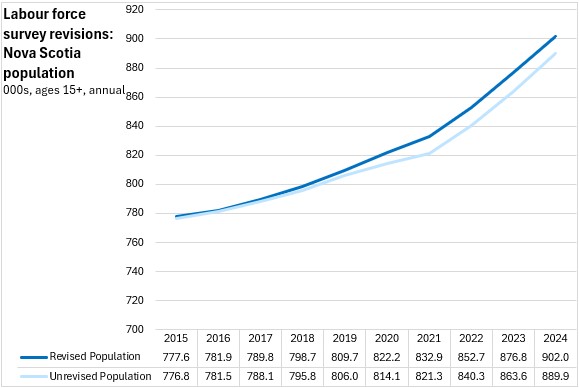
Although population totals were revised up substantially starting in 2018, the revisions to Nova Scotia's labour force only became more substantial in 2020. By 2024, Nova Scotia's upward revision to the size of the labour force reached 7,400.
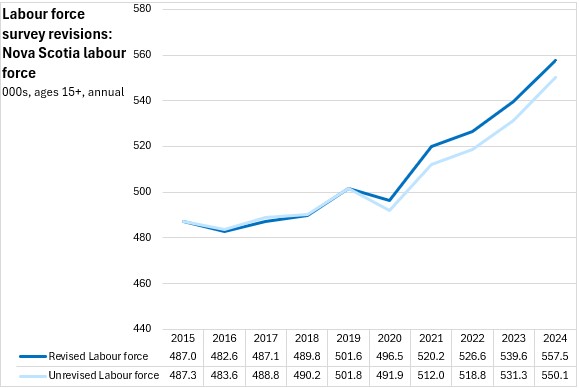
As with labour force, Nova Scotia's employment revisions grew larger starting in 2020 - reaching 6,700 by 2024.

Revisions in the number of unemployed persons in Nova Scotia were small - rising by 700-800 in each of the last 4 years.
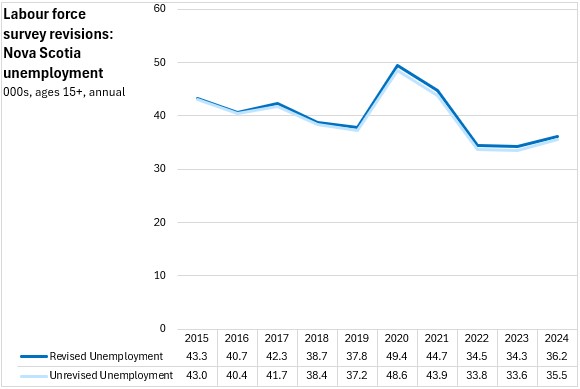
As the upward revisions to labour force were less than the upward revisions to population, there were substantial increases in the size of the population not in the labour force (neither in employment nor unemployed and actively looking for work). By 2024, the population not in the labour force had been revised by by 4,700.
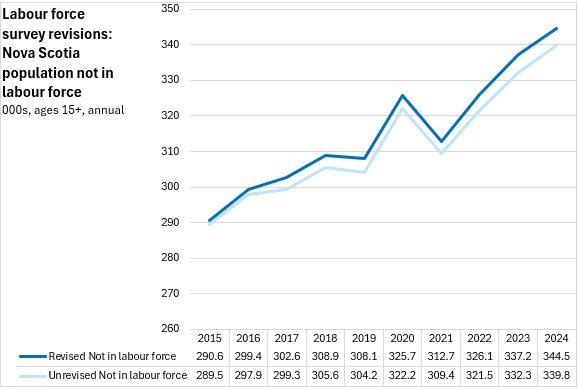
Although population, labour force, employment and unemployment were all revised up, there were only small changes in the unemployment rate - no more than 0.1 percentage points on average in any recent year.
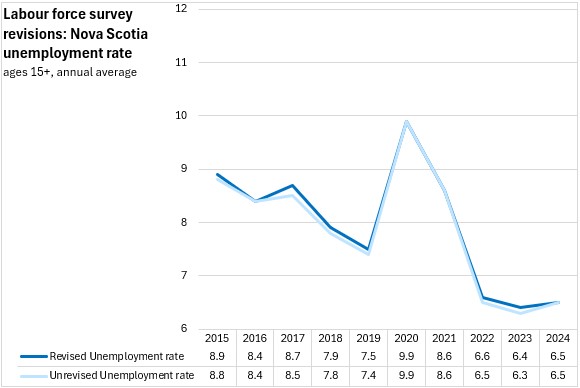
In earlier years (2015-2019), there were modest downward revisions to Nova Scotia's participation rates of up to 0.4 percentage points. In 2023 and 2024, estimates of Nova Scotia's participation rate were unchanged.
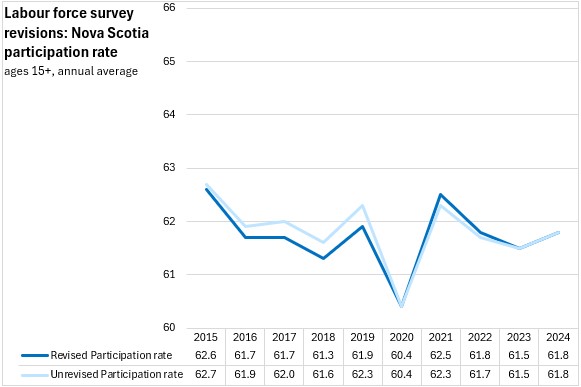
As with participation rates, Nova Scotia's employment rates were revised down from 2015-2021, but have had no revisions for the last three years of data.
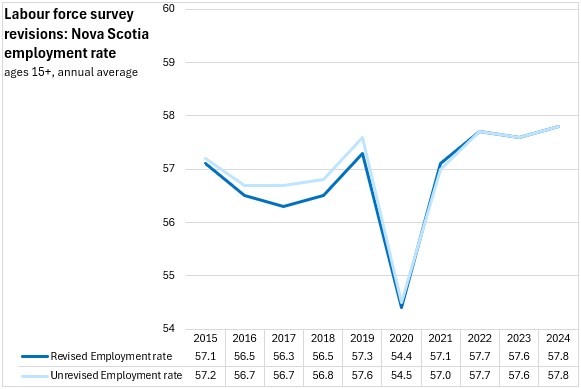
Nova Scotia's upward population revisions have been among the larger changes, along with upward revisions to populations in Manitoba and British Columbia. Populations in Alberta and Saskatchewan were revised down.
For 2024, Nova Scotia's population was revised 1.36% above the unrevised value.

As with population, Nova Scotia's labour force was revised up in each year. British Columbia and Manitoba also had large upward revisions to their labour force estimates while Saskatchewan and Alberta had downward labour force revisions. In the two most recent years, there were notable upward revisions to populations in Ontario and Newfoundland and Labrador as well.
For 2024, Nova Scotia's labour force level was revised up by 1.35% from the previous estimate.

Employment in Nova Scotia was revised up by 1.30% for 2024 from the previous estimate. British Columbia, Manitoba, Nova Scotia, Ontario and Newfoundland and Labrador reported stronger upward revisions to employment levels while Alberta and Saskatchewan had downward revisions.
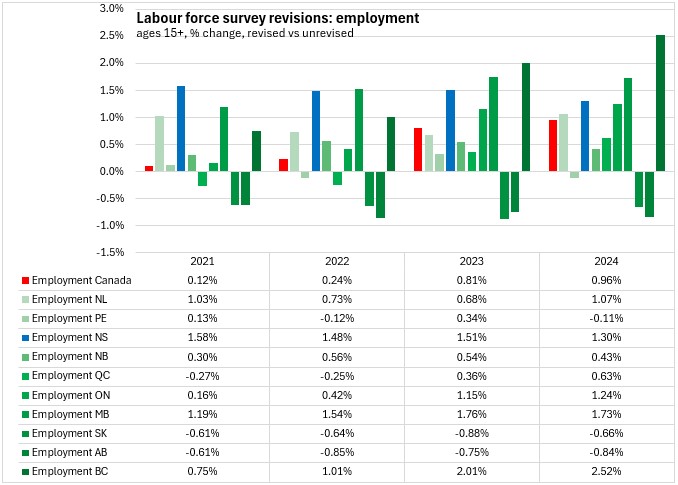
Although the number of unemployed persons was revised up by 800 or fewer in recent years, this amounted to around 2% of this small number. Manitoba, British Columbia and Nova Scotia reported the largest upward revisions in the number of unemployed persons. Saskatchewan reported the largest downward revisions in the number of unemployed persons.
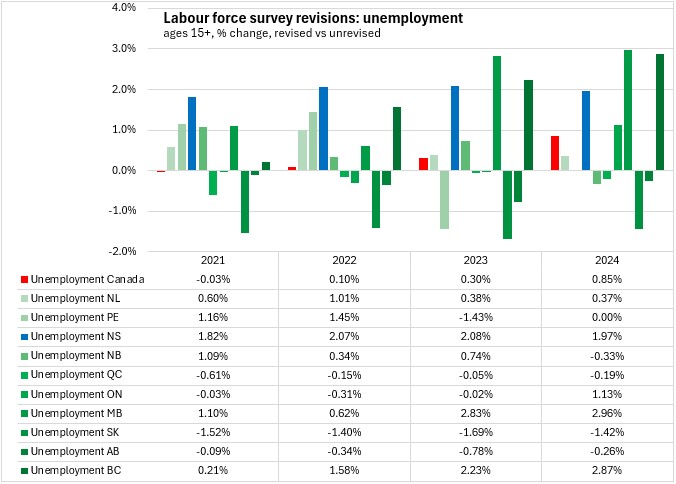
There were notable upward revisions to the size of populations not in the labour force for all of Atlantic Canada as well as Manitoba. For 2024, Nova Scotia's population not in the labour force was revised up 1.38% from the previous estimate.
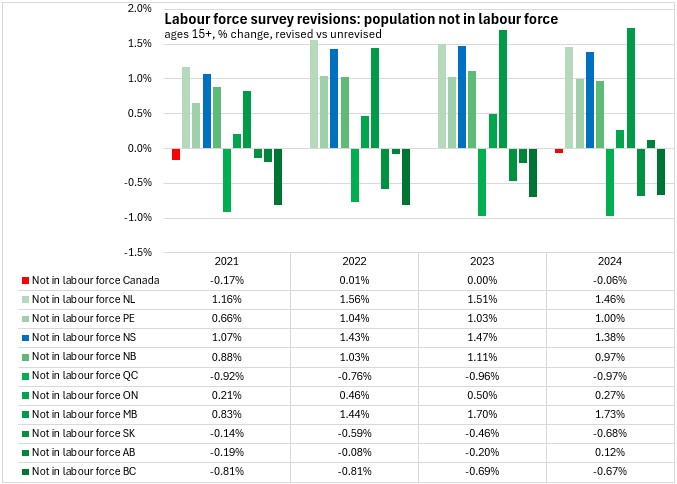
Most of the shifts in population, labour force, employment and unemployment left estimates of unemployment rates little changed - fluctuating by no more than 0.1 percentage points for any province in the last 4 years.
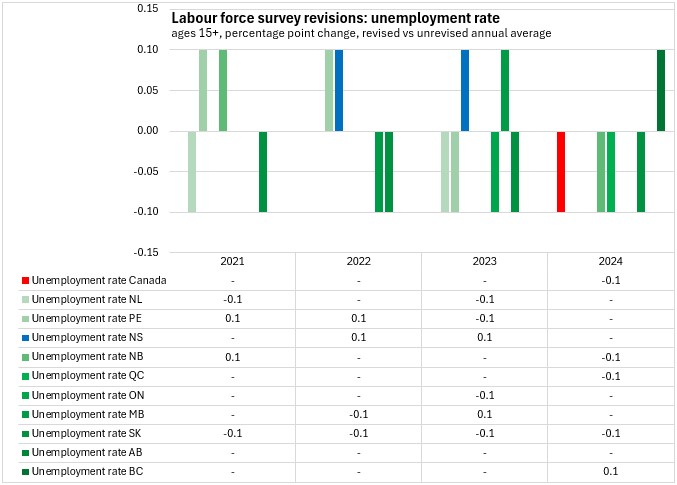
Nova Scotia's participation rates were little changed in the latest revisions. British Columbia's participation rates were revised up by more than rates for other provinces.
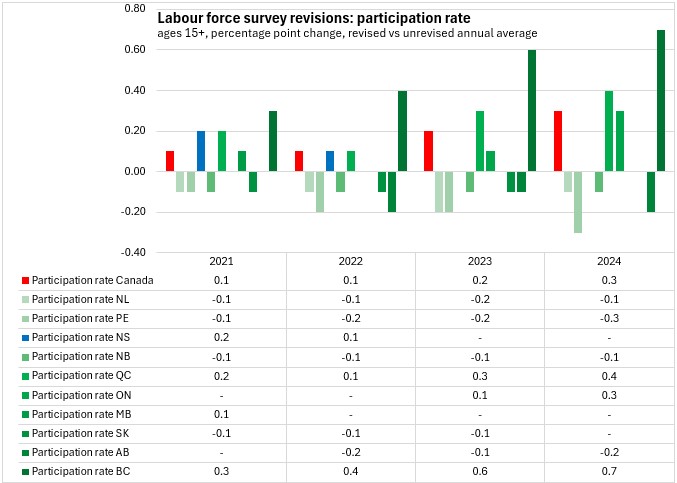
As with participation rates, Nova Scotia experienced few revisions in employment rates. British Columbia's employment rates were revised up by more than those in other provinces.
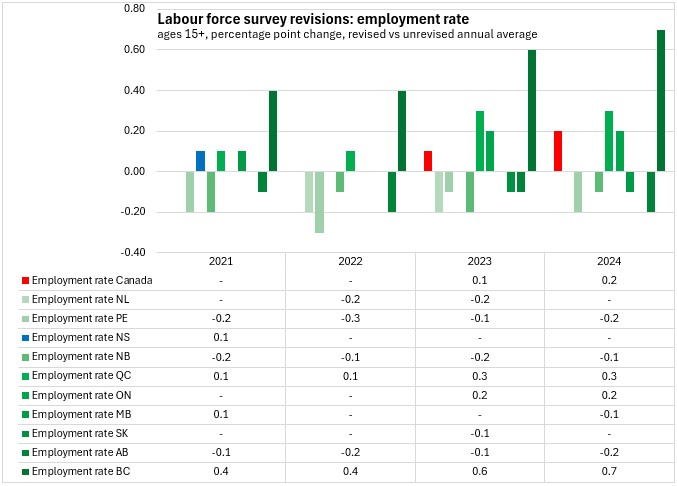
Note: Full revisions to all labour force survey tables will be completed by January 28, 2025.
Source: Statistics Canada. Table 14-10-0327-01 Labour force characteristics by gender and detailed age group, annual
<--- Return to Archive